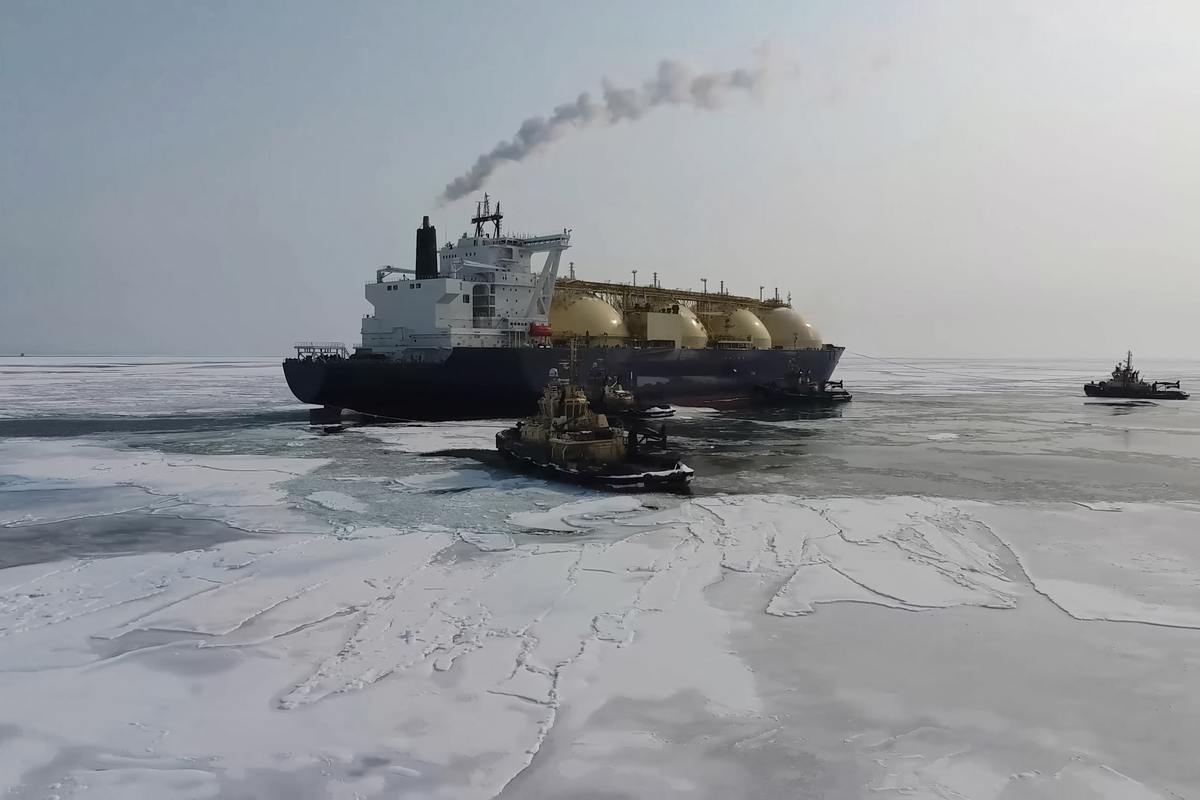IMO should restrict shipping's black carbon emissions - Clean Arctic Alliance
The Clean Arctic Alliance (CAA) urges the IMO to regulate shipping’s black carbon emissions and work towards completely phasing out the use of scrubbers in shipping.
 PHOTO: A liquefied gas tanker in the Arctic waters. Getty Images
PHOTO: A liquefied gas tanker in the Arctic waters. Getty Images
IMO should urgently come up with mandatory regulations to cut black carbon emissions from shipping to protect the Arctic environment, the non-profit advocated.
“After 13 years of IMO discussion, it’s high time the shipping industry took action to reduce the impact of black carbon emissions on the Arctic”, Sian Prior, lead advisor to the Clean Arctic Alliance argued.
“Amidst a global climate crisis, it is a travesty that there is still no regulation of black carbon emissions from ships, particularly as it has such a huge impact on polar melting, and given that the climate benefits of cutting this potent short-lived climate forcer are enormous”, she added.
Growing menace of black carbon
Black carbon, commonly known as soot, is emitted during the incomplete combustion of fossil fuels.
“Although as a ‘short-lived climate pollutant’ it stays in the atmosphere for only a few days or weeks, in that short time, it can have a dramatic impact on the climate,” the UN’s Climate and Clean Air Coalition explains. “Black carbon strongly absorbs sunlight, directly heating the atmosphere. When it falls on snow and ice, it accelerates melt [melting], revealing darker land or water beneath, including in remote regions of the world, like the Arctic.”
“These [black carbon] emissions from international shipping accounted for about 7% of all CO2e emissions in 2018, based on 100-year global warming potentials, and emissions of BC from shipping increased by 12% from 2012 to 2018,” International Council on Clean Transportation (ICCT) said in a report.
The ICCT, an independent think tank, noted last year that a ship can "immediately reduce" its black carbon emissions by 50-80% by switching to distillate fuels like LSMGO instead of residual fuels like HSFO or VLSFO.
The CAA's proposal to the global shipping regulator mirrored the ICCT's report, as it called on vessels operating near or in the Arctic to switch over from "dirtier fuels" to distillates.
“This [black carbon regulation] should then be followed, without delay, by the development of an Arctic fuel standard, and creation of black carbon emission control areas, which would further reduce black carbon emissions in locations in and near the Arctic,” it added.
Scrubbers: a double-edged sword
The CAA also urged IMO member states to ban scrubber discharges in their jurisdictional waters and end the use of scrubbers on ships "as soon as possible."
The organisation argued that scrubbers reduce air pollution from shipping exhausts but pump acidic wastewater overboard, which can have disastrous environmental effects.
There are currently 5,260 scrubber-fitted vessels in operation and orders, according to DNV data. About 80% of these vessels are equipped with open-loop scrubbers that mostly discharge washwater into the open sea.
It recommended that IMO implement "regional scrubber bans in ecologically, environmentally, and culturally significant areas such as the Arctic", ban scrubbers on newbuilds globally and phase them out on existing ships.
“All ships equipped with scrubbers can easily switch to cleaner distillate fuel, so instead of relying on scrubbers the shipping sector must work towards energy efficiency and the use of cleaner fuels”.
Finally, the CAA also called on IMO member states, including Arctic coastal nations, the US, Russia, Canada, Denmark and Greenland to strictly enforce a ban on the use of HSFO and carriage in the Arctic, “without waivers.”
IMO's Pollution Prevention and Response subcommittee is expected to draft guidelines this week on reducing the impact of black carbon emissions on the Arctic, using scrubbers in ships and the future of HFO in shipping.
By Konica Bhatt
Please get in touch with comments or additional info to news@engine.online






